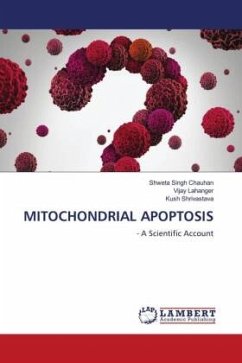
MITOCHONDRIAL APOPTOSIS
- A Scientific Account
Versandkostenfrei!
Versandfertig in 6-10 Tagen
40,99 €
inkl. MwSt.

PAYBACK Punkte
20 °P sammeln!
In mitochondrial apoptotic pathways basically, the release of the proapoptotic proteins from the intermembrane space triggers apoptosis, in a caspase-dependent (through cytochrome- c, Omi/HtrA2 and SMAC) as well as in a caspase-independent form (through AIF and endonuclease G). Apoptosis acts as a biological link between cancer genetics and cancer therapy. The development of malignant tumors results from deregulated proliferation or an inability of cells to undergo apoptotic cell death. Since apoptotic pathway can be manipulated to produce massive changes in cell death, the genes and proteins ...
In mitochondrial apoptotic pathways basically, the release of the proapoptotic proteins from the intermembrane space triggers apoptosis, in a caspase-dependent (through cytochrome- c, Omi/HtrA2 and SMAC) as well as in a caspase-independent form (through AIF and endonuclease G). Apoptosis acts as a biological link between cancer genetics and cancer therapy. The development of malignant tumors results from deregulated proliferation or an inability of cells to undergo apoptotic cell death. Since apoptotic pathway can be manipulated to produce massive changes in cell death, the genes and proteins controlling apoptosis are potential drug targets. Although many of the key apoptotic proteins that are activated or inactivated in the apoptotic pathways have been identified, the molecular mechanisms of action or activation of these proteins are not fully understood and are the focus of continued research.












